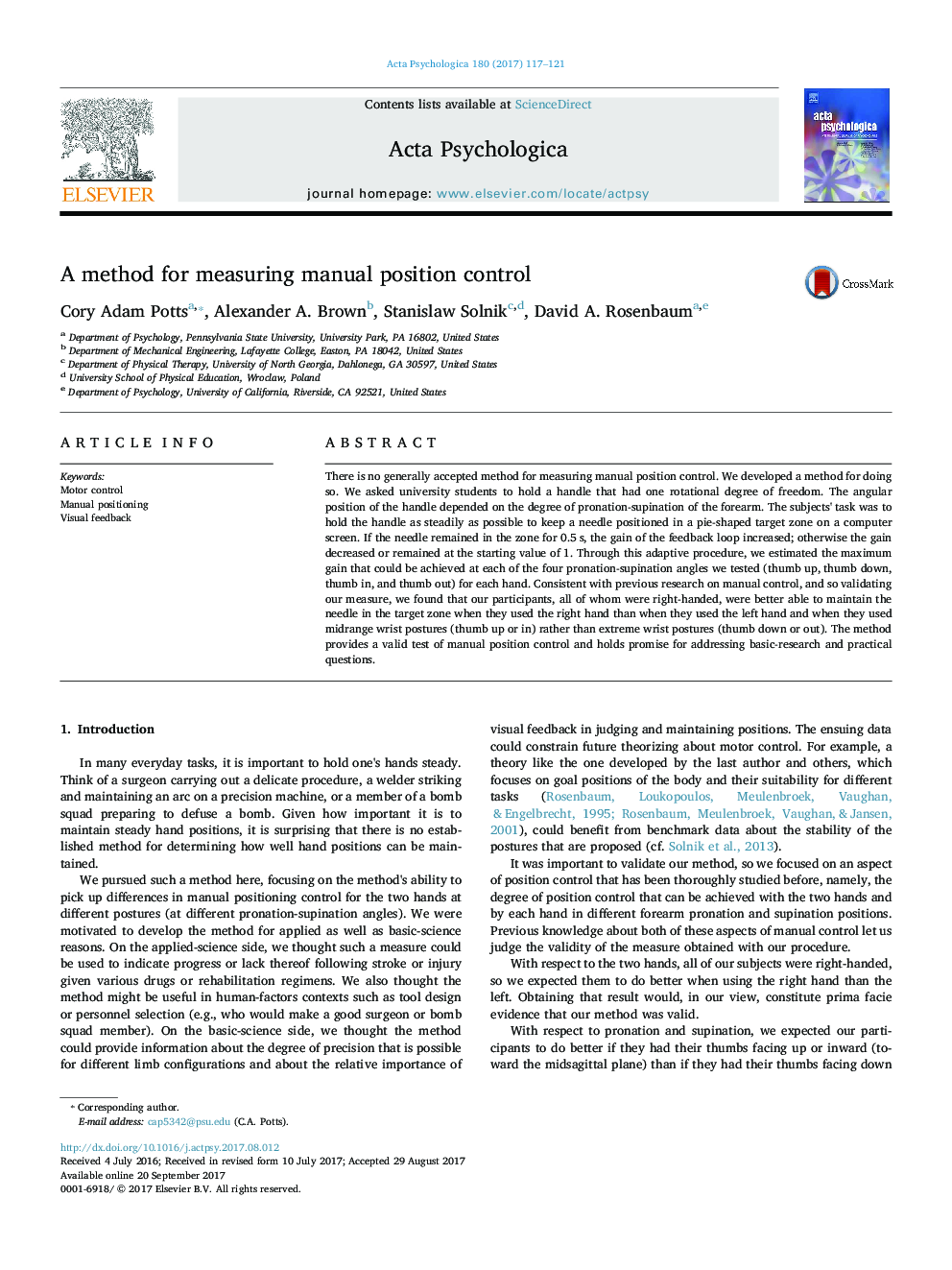| Article ID | Journal | Published Year | Pages | File Type |
|---|---|---|---|---|
| 5040188 | Acta Psychologica | 2017 | 5 Pages |
â¢A method is needed to measure manual positioning control.â¢We tested manual control using a novel adaptive feedback procedure.â¢Mid-range wrist postures afforded better control than more extreme wrist postures.â¢The new method can be used to address basic- and applied-science questions.
There is no generally accepted method for measuring manual position control. We developed a method for doing so. We asked university students to hold a handle that had one rotational degree of freedom. The angular position of the handle depended on the degree of pronation-supination of the forearm. The subjects' task was to hold the handle as steadily as possible to keep a needle positioned in a pie-shaped target zone on a computer screen. If the needle remained in the zone for 0.5Â s, the gain of the feedback loop increased; otherwise the gain decreased or remained at the starting value of 1. Through this adaptive procedure, we estimated the maximum gain that could be achieved at each of the four pronation-supination angles we tested (thumb up, thumb down, thumb in, and thumb out) for each hand. Consistent with previous research on manual control, and so validating our measure, we found that our participants, all of whom were right-handed, were better able to maintain the needle in the target zone when they used the right hand than when they used the left hand and when they used midrange wrist postures (thumb up or in) rather than extreme wrist postures (thumb down or out). The method provides a valid test of manual position control and holds promise for addressing basic-research and practical questions.
